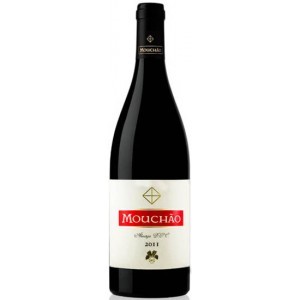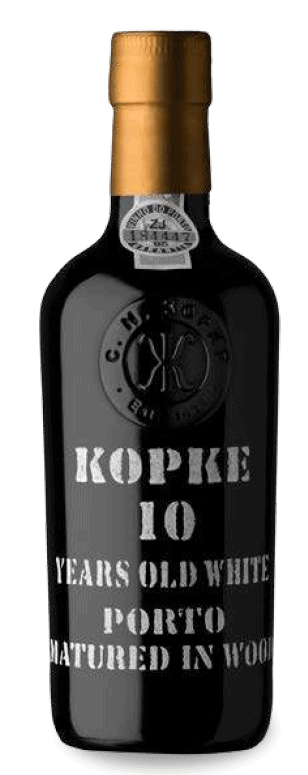
Wine Descriptions

Vintage and Harvest
2017 will be remembered in climate terms as one of the driest and hottest years in weather records. With the exception of February and May, where we had a normal rainfall, all the other months were dryer than usual with September beating them all with 0.0mm of rain. The dry weather brought with it an almost disease-free growing season and a very good fruit set which led to a nice and much needed increase in quantity. In a such hot year, hidric stress was one of our main concerns but nature surprised us (again) and until the beginning of September there were no signs in the vineyards of lack of water (in “normal” years hidric stress sometimes appears in mid of August). Due to these weather conditions, maturation speeded up and thus we began harvest on August 22 (the earliest date ever). Naturally, we were worried about the eventual consequences on the grapes balance but fortunately those concerns were proved unfounded as we picked very healthy grapes with good alcohol levels and astonishingly high acidity. The good weather allowed us to make a slow and relaxed harvest that eventually ended on Sept. 21. The wines, both whites and reds, reflect the quality of the grapes with very bright colors, clean flavors, sharp acidity and very well balanced.
Grape Varieties
Encruzado (100%)
Wine Making Technology
Crushing of the grapes with partial destemming, followed by a soft pressing in automatic press. The must was clarified by the action of gravity and decantation; fermentation with selected yeasts occurred part (50%) in French oak barrels during 7 month with “batonnage” 2 times a week and the other 50% in stainless steel vats at a controlled temperature of 16-18º C.
Bottling
The preparation of the wine for bottling consisted of a slight “collage”, a tartaric stabilization by the action of the cold and a light filtration. Bottled in August 2018.
Analysis
Alcohol by volume ( alc. / vol. ): 14.2% Total Acidity ( g / l C4H6O6): 5.80 Volatile Acidity ( g / l C2H4O2 ): 0.20 Dry Extract ( g / l ): 21.9
Organoleptic Tasting
Light straw perfectly clear; with an elegant bouquet of fruits and a slight touch of resin. On the palate the first impression is of freshness but immediately we recognize the great structure and complexity of the wine. The finish is very long and persistent.
Aptitudes
A wine to satisfy the fans of young wines, though it will gain immensely with a few years in bottle.
Service
It should be served at a temperature of 12-14ºC, and accompanying seafood, strong fish dishes and spicy food.

Herdade do Mouchao
In the early 19th century, Thomas Reynolds moved to Portugal’s Alentejo region to become involved in the cork business. Three generations later, his grandson, John Reynolds, purchased Herdade do Mouchão. Vineyards were planted in 1901 he built a high-ceilinged adobe winery (or “adega”) and a distillery was added to the winery in 1929, where until today Mouchão’s pommace brandy is produced. Today, the Herdade do Mouchão continues to be run by the descendants of the original family whose cellar and vineyard workers have been with them for generations. The process is, as it always has been, unhurried. The grape varieties are local, picked by hand and foot-trodden. In the ever-changing world of winemaking, Herdade do Mouchão, remains a traditional, family-run winery.
Ponte de Canas
A relatively new addition to the range, Ponte das Canas is a blend of the Estate’s very best Touriga Nacional, Touriga Franca and Syrah, handpicked and foot trodden in traditional stone lagares – the same winemaking methods used at the adega for over a century.
A blend of the Estate’s very best Touriga Nacional, Touriga Franca and Syrah.
The Estate’s top-end non-Alicante Bouschet, Ponte Das Canas is aged in a blend of tropical hardwood ‘tonels’ and new oak barriques and bottled 18-24 months after harvest.
The medieval bridge that has inhabited Herdade do Mouchão for centuries was one of the points of inspiration for the name. Born in 2005, based on vineyards planted in 1999 and 2004, Ponte (formerly Ponte das Canas) has a combination of three grape varieties: Touriga Nacional, Touriga Franca and Syrah. Being a wine with potential for aging.
Ponte is aged for 18 to 20 months in French oak barrels, and is marketed after at least another 12 months in the bottle. Coming from vines less than 20 years old, the reds are made in open mills with treading on foot and with 100% stems.
| Style: | Vinho Tinto |
| Region: | Alentejo |
| Year: | 2015 |
| Grape Varieties: | Touriga Franca | Touriga Nacinal | Syrah |
| Alcohol Content: | 14% |
| Capacity: | 750ml |
| Producer: | Herdade do Mouchão |

HOUSE
If time is marked by special moments, Kopke’s history is written in exceptional years. Years that are worth keeping, so they can be relived and celebrated any time. When we retrieve years from Kopke’s history, we are creating more history: the age on the label of this Kopke Port wine is the average age of all the wines in the blend.
VINIFICATION
Its fermentation takes place in stainless steel vats, where the grapes macerate and are churned with their skins on, at temperatures between 16-18ºC, to produce a white wine full of colour and structure, able to sustain prolonged ageing in oak. The fermentation is halted by adding grape brandy, creating the fortified wine. A wine of high quality, made by blending wines of different harvests to achieve the array of sensory qualities that are typical of these aged white wines. The wines mature in oak casks for variable periods of time, with the average age of all the wines in the blend defining the age on the label. The resulting blend expresses the characteristics given by the ageing in wood.
TASTING NOTES
An appealing gold colour. Elegant and complex, with aromas of spice, prevailing notes of dried fruit and elegant hints of wood. Smooth and round on the palate, it shows complexity amidst intense flavours of dried fruit. An excellent finish.
RECOMMENDATIONS
Served chilled, it is an elegant aperitif. Wonderful with rich starters, such as foie gras, vol-au–vent, scallop gratin or mushroom risotto. Being remarkably fresh despite the age, it is ideal with a crème brulée, a crispy crepe with custard or a spicy apple crumble. Goes perfectly with blue cheese, such as Stilton. Equally delicious on its own. Best served at a temperature between 8 and 10°C.
AWARDS AND HONORS
Robert Parker – 90 pts (2016)
Wine Spectator – 92 pts (2016)
.
